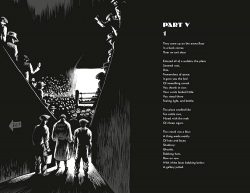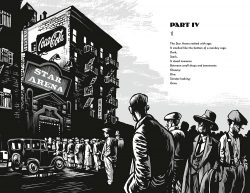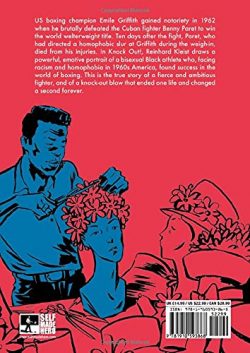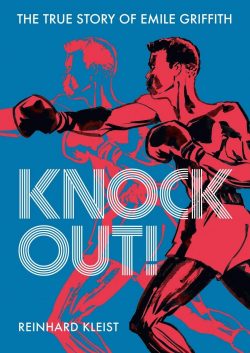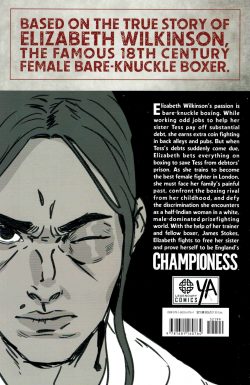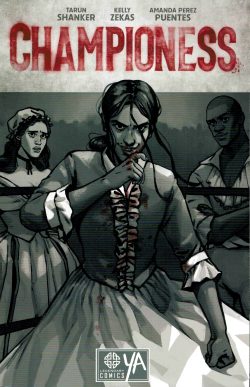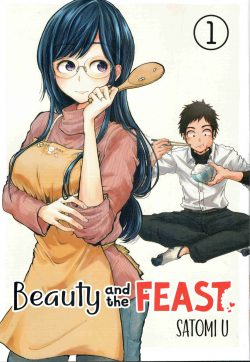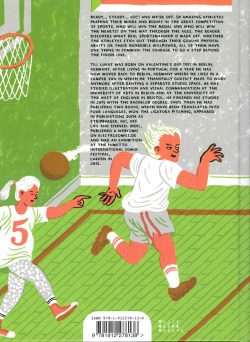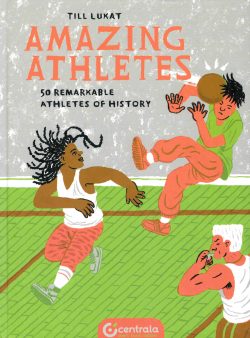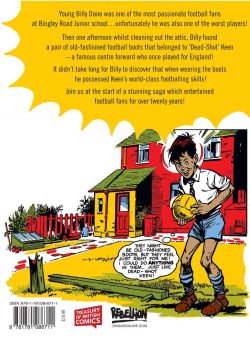
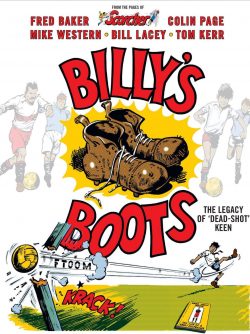
By Fred Baker, Colin Page, Mike Western, Bill Lacey, Tom Kerr & various (Rebellion Studios)
ISBN: 978-1-78108-671-1 (HB/Digital edition)
Win’s Christmas Gift Recommendation: Classic Comics Fun and Games… 9/10
British kids have always been utterly besotted with sports and comics have continually fed and fuelled their addiction. Even in the days when children’s only exclusive “entertainment” was primarily prose “Story Papers”, tales of playing field rivals, earnest competition, glorious accomplishments, fair play and sporting prodigies dominated. As comic strips took tight hold of kid’s lives during WWII and after, generations of boys grew up wanting to be Wilson, Alf Tupper, His Sporting Lordship, Skid Solo or Roy of the Rovers.
As the 1950s unfolded, football became the undisputed leader of sporting strips: a peculiarly wide field that had found room for speedway, cricket, motor racing, rugby, boxing, wrestling, athletics and fishing among many, many others. In September 1954, Amalgamated Press launched a companion comic to anthological market leader Lion. Edited by Derek Birnage – until 1963, when Barrie Tomlinson took over – Tiger – The Sport and Adventure Picture Story Weekly was cover-dated 11th September and out in time for the new football season. Primarily sports-themed for its entire run (1573 issues until 1985) it merged with or absorbed Champion (1955), Comet (1959), Hurricane (1965), Jag (1969), Scorcher (1974) and Speed (1980) before itself being subsumed by the relaunched Eagle in April 1985.
Among its most memorable treasures was Skid Solo, Johnny Cougar, Rod and Line, Hot Shot Hamish, Nipper, Football Family Robinson, Billy’s Boots and Roy of the Rovers…
As the 1960s segued into a new decade, across the United Kingdom, football was king in comics: everything from straight sporting drama strips to wild comedies with strange teams and odd motivations, and even supernaturally-tinged strips like Raven on the Wing…
Shoot launched in 1969, a junior, comics-heavy version of adult magazine Goal (which it eventually absorbed!) and Striker in January 1970. Its lead strip would graduate to The Sun newspaper.
Scorcher also kicked off on January 10th 1970, with an all football roster of photo-features sports journalism dedicated to the beautiful game and strips including Kangaroo Kid, Royal’s Rangers, Bobby of the Blues, Sub (He’s always on the sidelines!), Paxton’s Powerhouse, Lags Eleven, Jack of United, Jimmy of City, Hotshot Hamish and Nipper, but the breakout feature proved to be a dramatic reimagining of a comedy strip from Tiger: Billy’s Boots…
Scorcher became Scorcher and Score after 77 issues (merging with Score ‘n’ Roar in early July 1971) and finally called “time” with the October 5th 1974 issue – a further 171 outings. Its favourite features were ultimately absorbed into Tiger in 1980, but Annuals and Summer Specials continued to appear until 1984.
The stories here originally played in Scorcher from 10th January 1970 to 9th January 1970. The strip had taken its name from a comedic feature by Frank Purcell that ran in Tiger from 1961-1963. For a fresh new era, it was overhauled by 50-year veteran scripter Fred Baker (Martin’s Marvellous Mini, Skid Kids, Tommy’s Troubles, Hot-Shot Hamish, and much more in titles including Tiger, Buster, Chips, Radio Fun, Film Fun, Valentine and Roy of the Rovers).
He wrote the feature for most of its first 20 years run which was initially illuminated – in this volume at least – by Colin Page (Adam Eterno, Paddy Payne), Bill Lacey (Rick Random, Super Detective Library, Cowboy Comics Library, Mickey Mouse Weekly, Mytek the Mighty, Rat Pack), Mike Western (Lucky Logan, Biggles, No Hiding Place, The Wild Wonders, The Leopard from Lime Street, Darkie’s Mob, HMS Nightshade, Roy of the Rovers) and Tom Kerr (Little Lew, Fay, Monty Carstairs, Kip Kerrigan, Kelly’s Eye, Captain Hurricane, The Steel Claw, Charlie Peace, Kraken, Black Axe, Boy Bandit, Tara King/The Avengers, Peter the Cat, Clarks Commandos et al).
Billy’s Boots was initially rendered in 2-page, full colour instalments and survived Scorcher’s merger with Tiger in 1974, and amalgamation with Eagle in 1985. A year later Billy migrated to Roy of The Rovers magazine offering new adventures until 1990. Even then, the lad kept kicking, appearing in reprints, Annuals and Best of Roy of the Rovers Monthly, Striker and Total Football magazine into the 21st century.
He’s also an international star, having been translated into Finnish, Swedish, Icelandic, Dutch, Bengali, Turkish and more…
In October 1971, John Gillatt took over the art for a 16-year run which truly defined the strip in readers’ eyes and minds, but that’s a treat for another volume…
Here however, in interlinked serials we meet 12-year-old Billy Dane who is an avid – but rubbish – footballer. His earnest desire is simply to play the game but he’s so bad nobody will let him join even a playground kickabout…
An orphan living with his grandmother, Billy’s life changes forever when he dutifully cleans out her attic and finds a battered old pair of football boots. They were a souvenir his grandad had picked up, and had been used by sporting legend Charles “Dead-Shot” Keene. When Billy wistfully dons them and starts mucking about in the backyard, something miraculous occurs.
Suddenly, he can kick with the force and accuracy of an adult professional and later testing shows that the fabulous footwear sends him subconscious messages, enabling to read a field and almost predict the best place to be in any game situation…
Now bursting with confidence and hungry to play, he rapidly moves from friendly games to school caps, county matches and even international fixtures, with a heaping helping of drama accruing from his eagerness frequently leading him to play for rivals and opposing teams…sometimes on the same day…
Further confusions and concerns arise as he researches the life of Dead-Shot and realises that he’s often reliving actual events that affected the star and shaped his astounding career. The phenomenon doesn’t let up even after Billy finally meets and befriends his idol…
Of course, as this is a drama the most challenging problem Billy constantly faces is losing, mislaying, being deprived of and recovering the ratty, tatty, far-out-of-fashion old boots: prompting many manic moments where the plucky kid must humiliatingly go on without the miracle-making fantastic footwear, but always the lad perseveres and overcomes…
It’s also not as if he doesn’t have other problems too. At one stage he’s forced to move across the country, leaving all his friends: encountering school bullies, and teachers and trainers who think he’s troubled…
After its initial set-up the nature of the stories become rather formulaic, with Billy always seeking to be the best he could: trying to wean himself off ghostly footgear and develop innate natural skills. This was usually a huge disappointment as he always failed unless he was wearing the boots of his hero. Thankfully, the astounding illustration always makes the stories feel fresh and the ongoing mystery of how and why the boots work keeps the tension up…
Such narrative repetition was not deemed a problem at the time, since editors held the firm conviction that readers had a definite shelf-life and would quickly move on to better things… like Chaucer, Len Deighton, or the back pages of The Sun or Daily Mirror…
This astoundingly absorbing classic is another perfect example of purely British comics sensibilities: passionate, idealistic and desperately earnest as it follows the path of a working class hero navigating a treacherous path to glory or dismal defeat. This is a welcome reintroduction: inspirational, warm, beautifully rendered and absolutely unforgettable. Another treasure-trove from Rebellion’s ever-expanding Treasury of British Comics, this tale span generations and demands to be in every family bookcase.
© 1970, 1971, & 2020 Rebellion Publishing IP Ltd. All Rights Reserved.
A thankful tip of the fact hat to footy publications site Soccerbilia – for some of the background recycled here.

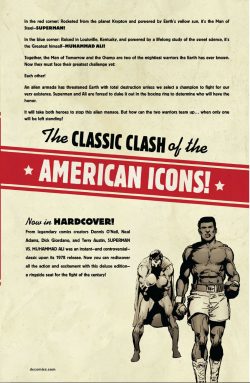
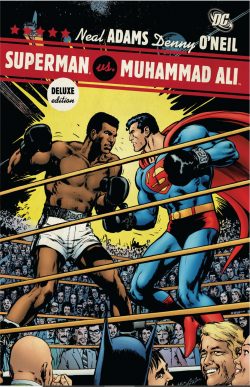
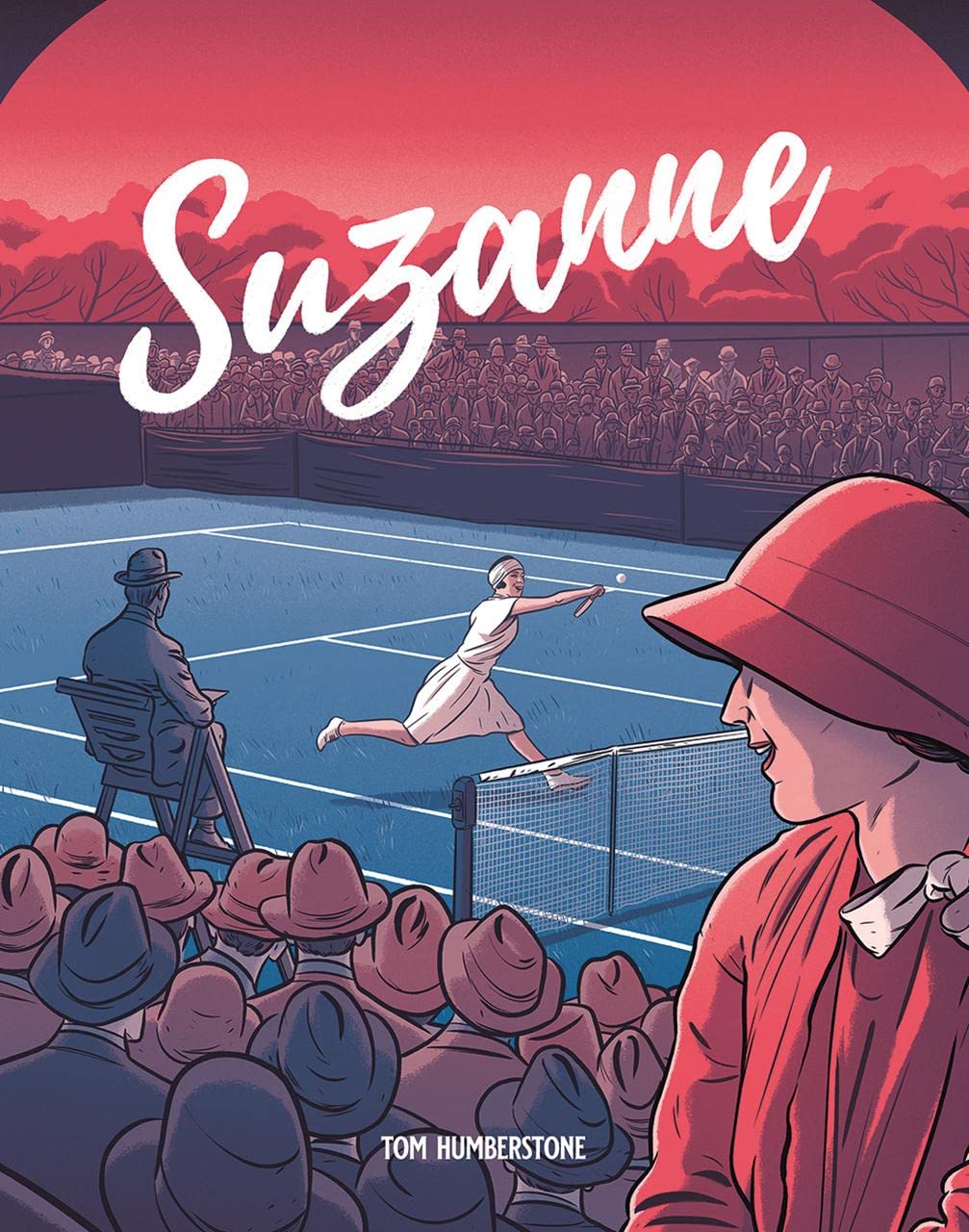
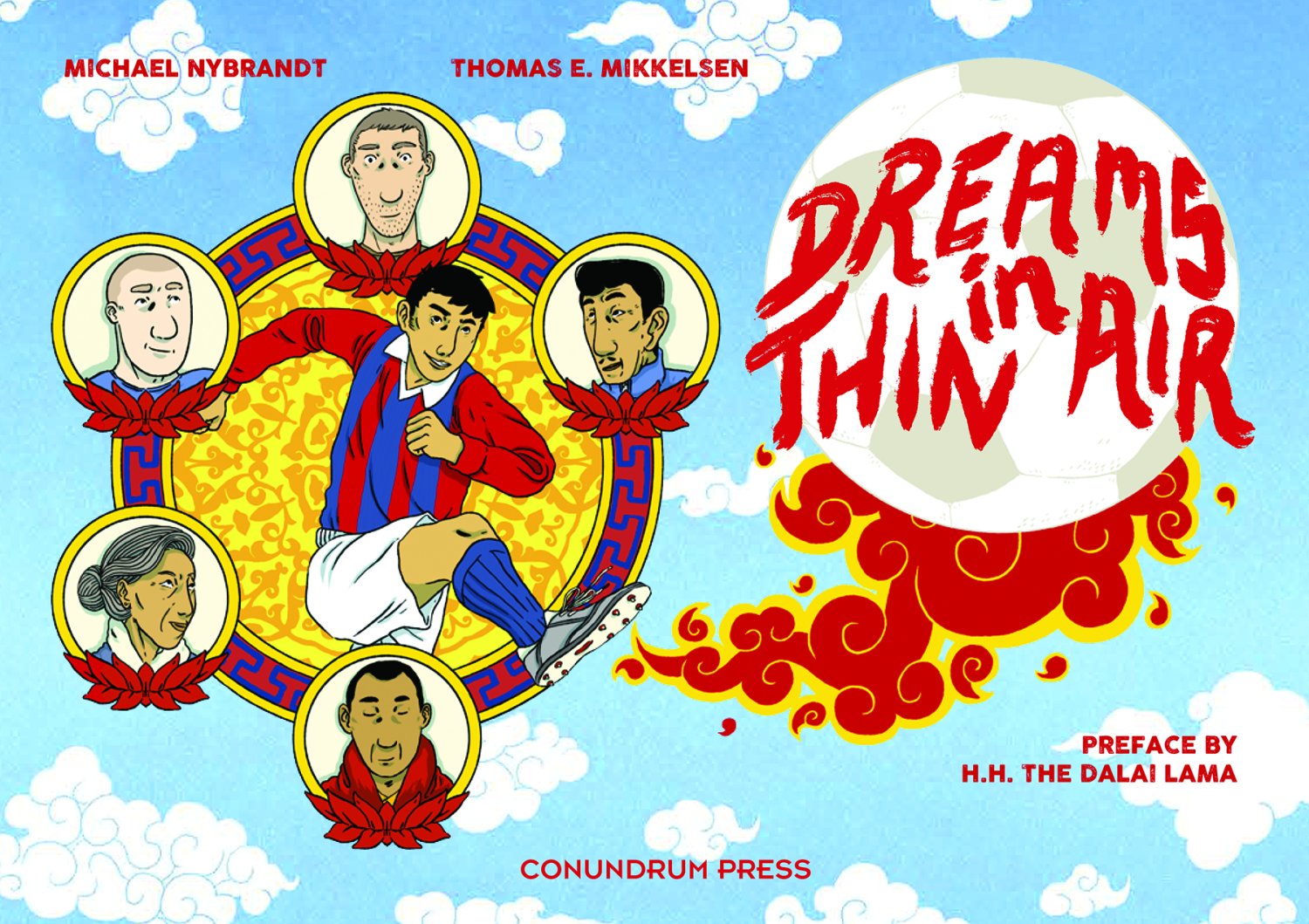
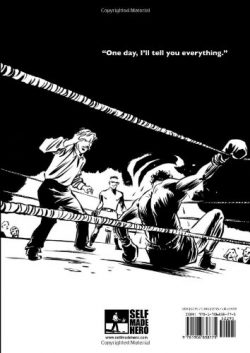
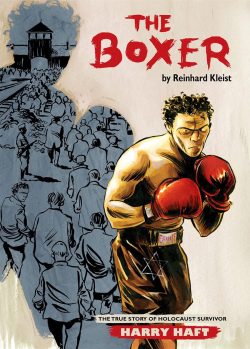
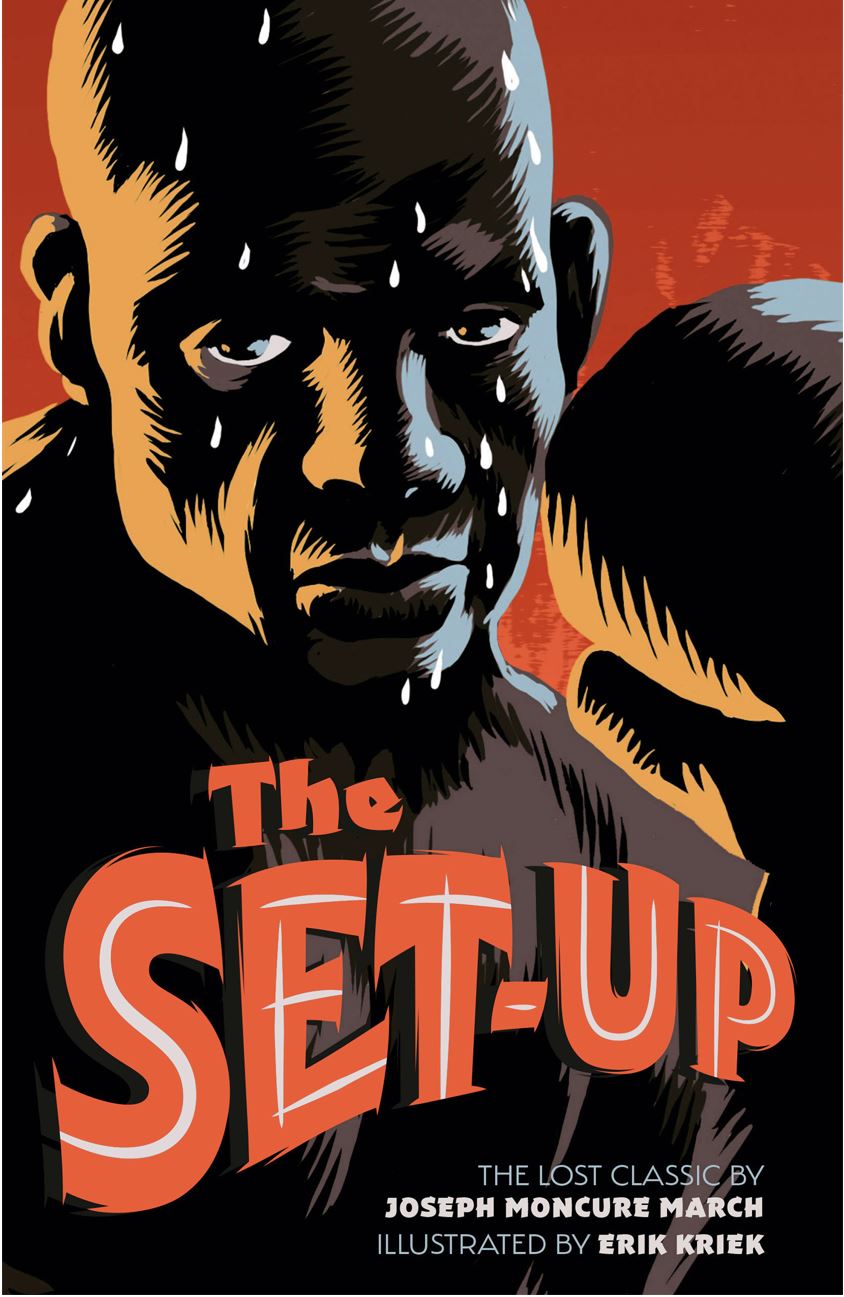 By
By 